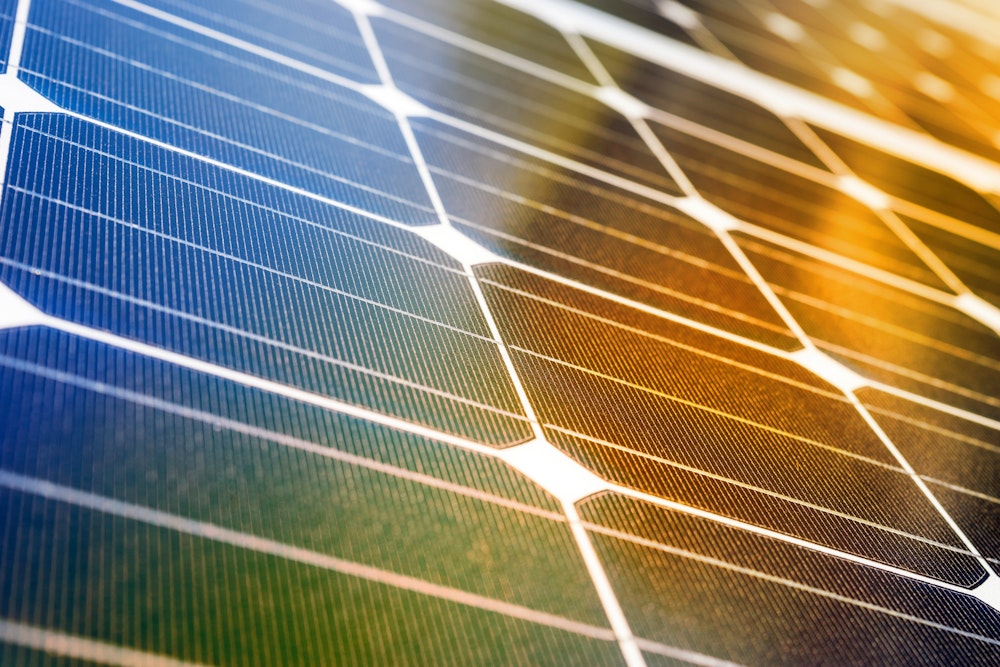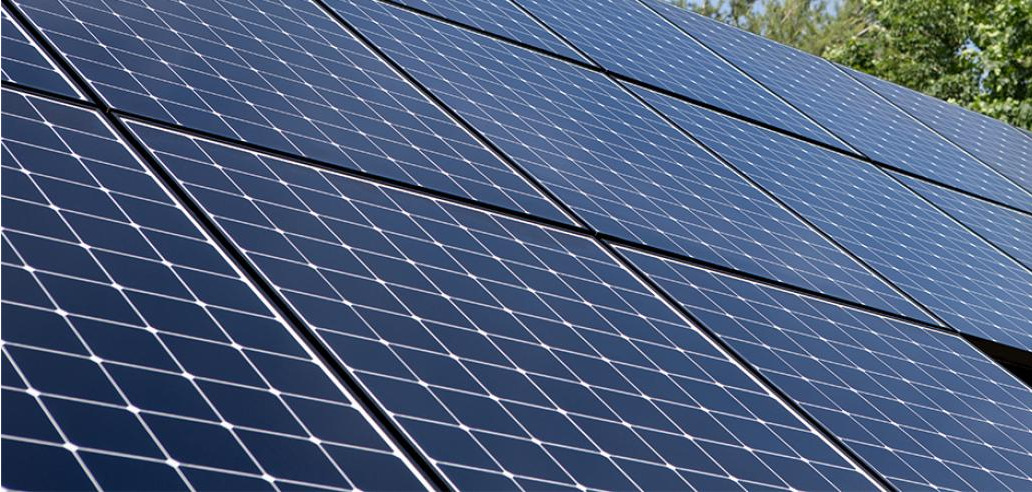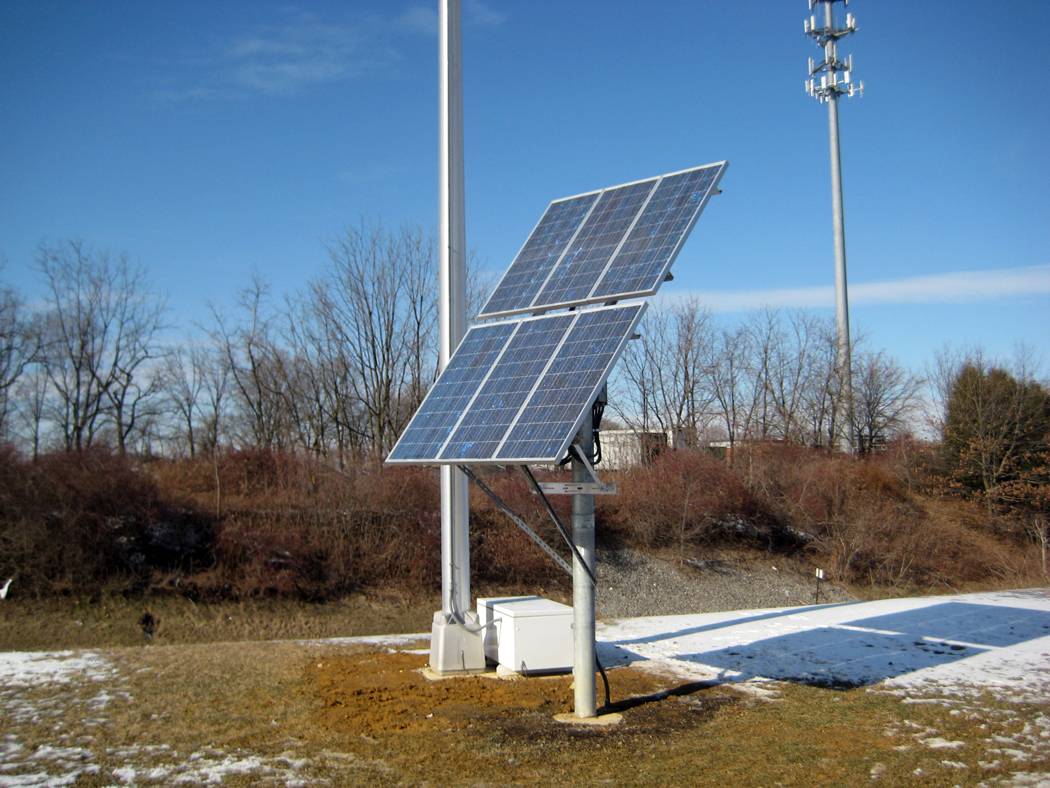Shading Inspection
Solar panel is very sensitive to shading and it could decrease the efficiency by far, even with minimal shading. For example, even if one cell of photovoltaic panel is shadowed from the sun, the overall energy production would drop. It was also noted that, although only 9% of the photovoltaic system was shadowed, it led to 54% less efficient power delivery. Some of the ways to ensure the inspection of the issue would be proper, are:
-
Visual inspection of the landscape: While walking around the photovoltaic system, inspect the surroundings at different day times and make sure that no trees, buildings or new construction could shade them. Moreover, this inspection should be repeated from time to time, because trees grow and the buildings are altered.
-
Use shading analysis tools: It could be a solar pathfinder or even a digital application, which calculates the event of shadowing from sun and paths of sun throughout the year.
-
Keep track of the shading patterns: One can also keep the record of shadowing for future using and observe the alteration of circumstances. It also allows for the anticipation of potential issues and for deciding whether trees should be trimmed or installation should be redone.
-
Consult information on the power production: If there is a possibility to look at the previous data on energy production, then it would be a great way to see whether there are any sudden alterations in the system use in recorded years.
-
Consultation with a professional: If the person is not sure about the results, it would be wise to consult someone who can investigate the issue in more depth.

Panel Cleanliness
Solar panels cleaning is essential to maintain their capacity and preserve the overall efficiency of the system. Dirt, dust, and other residues can significantly reduce the output of solar panels. Google made a study on their solar farms and realized that cleaning of the panels doubled their output overnight. To make sure that your panels are properly cleaned and operate to their full capacity, follow these steps:
-
Regular inspections: it is recommended to perform a visual inspection of your panels once a month. This will help to determine whether there is a need for cleaning. During the inspection, try to identify any accumulation of dirt, dust, leaves, or bird droppings that may prevent the sun from reaching the panel’s surface.
-
Cleaning frequency: the frequency of panels cleaning depends on the location and the condition of the environment. Generally, it is recommended to clean the panels twice a year, or even once a year in areas with clean air and low dust activity. In some cases, panels may need cleaning as frequently as once a month in an arid or dusty environment. You can also track the amount of electricity your solar panels are producing and clean them only if you notice a dramatic drop in the output.
-
Proper cleaning methods: always use soft brushes and mild soapy water to clean your panels. Avoid using any harsh chemicals or abrasive tools that might scratch the surface of the panels. They conductive coating most solar panels have may easily get damaged by exposure to aggressive cleaning substances or tools. In addition, use telescopic cleaning poles for higher installations or clean your panels with a hose using a nozzle to gently spray them with water.
-
Monitor before and after cleaning: to measure the efficiency of cleaning, make sure to check the performance of your panels before and after washing them with a solar monitoring system. It should help you to estimate the difference in energy produced by panels before and after you have cleaned them and to validate the improvement you have received due to cleaning. If you are not confident about cleaning your panels yourself, or they are installed in hard-to-reach places, consider hiring a professional cleaning service. Many of them are cheap and guarantee that your panels will be cleaned and preserved in a safe manner.
Inverter Check
An inverter is the primary component in a solar panel system. It is responsible for converting the direct current produced by the panels to alternating current used in households and businesses. As the inverter is vital for the generation of energy, it should be treated accordingly, and maintenance should be conducted to ensure efficient performance.
The following is a step-by-step instruction of how to maintain your solar inverter and check its state:
-
Visual inspection. The first step would be to conduct a general visual inspection of the system. One might check whether the inverter has any visible damages such as cracks, discoloration, or possible water penetration. Physical altercations are most likely to mean a potential failure of the part.
-
Indicator lights. Most inverters feature a set of indicator lights. A green color on an indicator typically indicates that the inverter works properly, meaning that there is no need to check anything else. However, an orange or red light might indicate that something is wrong. A glance at the light can help determine whether the inverter works properly in a minute and without any further effort.
-
Error codes and alarms. Another feature that the majority of modern inverters have is a set of error codes that could be displayed digitally or the inverter would ring an alarm. Look up the interpretation of error codes in the user manual or search the manufacturer’s website. Make sure you can distinguish the error code that appears on your inverter next time it will show one.
-
Performance monitor. Always check the inverter data regarding its performance. Look for the decreasing efficiency in relation to the milliseconds and compare the data with the records of older periods. A significant decrease might be a sign of a problem such as thermal derating or an electrical component failure.
-
Software update. Make sure to keep your inverters firmware updated. Just like with a computer, the manufacturers of inverters constantly analyze data to improve system performance and might help you solve a problem that you did not know how to fix or optimize your inverter.Parameters setup. If you think that something is off or you are not using a standard model of an inverter, feel free to turn to a specialist. Many of them are not afraid to come over and make a general maintenance check, or at least help you determine and remove a problem that an average home user cannot deal with, even according to the instruction provided.
Data Analysis
Data analysis plays a huge role when it comes to the health of your solar panel systems. This process implies the examination of electricity output data of panels used. When applying this technique, it may be easier to notice when the panels start deviating from what may be considered the standard. This way, you will be able to notice any problems faster. In order to analyze a solar panel system, you may adhere to the following steps:
-
Collect Baseline Data
Start by collecting information on when the solar system is not working. When collecting your baseline data, there are many resources where you can gain information, including solar photo-maps and solar installation booklets. The information may be obtained from the manufacturing company as well. In other words, this step will provide the information of whether your solar system is running as it was expected to.
-
Use monitoring tools
A large amount of solar systems has had monitoring tools installed in them. Real-time data on systems energy production will be shown to the owner. Such kind of monitoring may be conducted on a daily, monthly, or even yearly basis. The solar owner will know for sure if the solar system’s energy production is out of the ordinary. SolarEdge or SMA may provide you an online monitoring tool that allows you to monitor the system more closely and provides more in-depth data analyses.
-
Analyze when production drops or increases
It may be helpful to analyze data every few days. By having a closer look at the graphs, the owner may notice if there is a problem with the system. For instance, if the output is regularly dropping at 2 pm sharp, it may be a shading issue. If it is gradually reducing, at some point an object may have spread which now shades the system.
-
Consider when each season ends
Solar systems produce energy in dependence on the amount of sunlight. Thus, during winter, energy production may be less compared to summer. Hence, take a look at the upcoming few weeks’ data, and compare it with the rest of the same period of the last year. For instance, if energy reduction is noticed for the month of July, it may be concluded that the solar panels’ quality has decreased. The energy output is lowered due to the beginning of a bad health season.
-
Analyze Performance Ratios and report
Once everything is analyzed, it is time to think of performance ratios. These are calculations of energy which could be produced if the system was working optimally compared to the actual energy output. The device’s soiling may become a main issue and shade. Panels can also be affected by technical issues, circuited. If any of these problems are noticed, prepare a report on your data gather knowledge and seek a professional.

Energy Production
Understanding and analyzing energy production is a key part of assessing the health of your solar panel system. Properly functioning solar panels should deliver energy consistently and meet or exceed the expectations established by their rated capacity and the location chosen for them. To effectively monitor and evaluate this aspect of your solar panels installation, follow the detailed steps provided below:
-
Track daily output: Use your solar panels’ integrated monitoring tool, if they have one, or a third-party application to monitor the daily energy output of your installation. Record this data in a log to see how it evolves over time.
-
Benchmark against the expected output: compare the actual daily, monthly, and annual output against the expected output produced by the information provided by the manufacturer or the installer. This expected output should take into account the orientation and tilt of your panels, as well as the local weather at the time of installation and the historical solar irradiance in your area. For example, a solar panel rated at 300 watts should output 1.2-1.8 kWh per day in most U.S. regions during summer.
-
Calculate efficiency ratios: to determine your solar installation’s efficiency ratio, compare the amount of energy produced to the energy that should have been produced under the ideal conditions assumed in the previous step. For example, if a panel output 8 kWh on a sunny day where it should have output 10 kWh, then the efficiency ratio is 80%.
-
Consider environmental factors: adjust your calculations with regard to the specifics of your environment. Keep in mind that the output will change with the seasons, and such factors as cloud cover or the specific particle pollution produced in your area may affect the results. Also, look for new buildings or trees that may be causing shadows.
-
Perform regular performance reviews: schedule time for a monthly and a yearly review of the data produced by the system. This is crucial for identifying long-term trends in the performance of your system which could be indicative of an emerging problem.
-
Discuss the issue with a professional: if you believe that panels are underperforming on a consistent basis, contact your solar energy provider or a specialist. They will be able to carry out a more thorough diagnosis, which may include an on-site visit, to identify the cause of energy losses.
Solar Monitoring Tech
One of the earliest steps in the installation and maintenance of a solar panel is the implementation of advanced monitoring technology. Advanced solar monitoring technology provides real-time data at panel level operations as well as system-level energy data. Below are steps on how to monitor the health of a solar panel system using solar monitoring technology.
-
Choose an appropriate solar monitoring system. Some common monitoring systems, such as SolarEdge and Enphase, provide real-time production for solar panel systems at panel level which allows one to easily identify where the issues are.
-
Determine how the monitoring sensor is going to be installed for instance on an internet-based monitoring platform. When figuring out how to install and set up the system, at the same time identify the conditions required by the sensors. If the system is based on the Internet or Wi-Fi, ensure that all components such as the control module and sensors, are connected to each other as well as the monitoring platform.
-
Monitoring the site. Often a solar monitoring system will show real-time energy production, peak sun hours, energy consumption as well as system efficiency. Tracking these attributes a site will be able to determine where the problem is. For example, one might notice sudden drops in output such as a decrease by 50 percent or the system never going beyond 80 percent, such indications means that it is high time it reached out for help.
-
Configure the alert systems that come with the monitoring system based on the normal operating level per site when there is a performance issue. Modern day advances in monitoring systems are able to send signals to your mobile phone or email to inform you how your system is performing. Some of the issues alert by the alert systems are efficiency drops and equipment failure.
-
Analyze data collected by the monitoring system to periodically plan preventive maintenance. For instance, due to dust a site will see a decline in efficiency which implies that it time to clean the solar panels. This is also a vital time for consulting with a professional when the data does not refer to a simple fix subjection.



